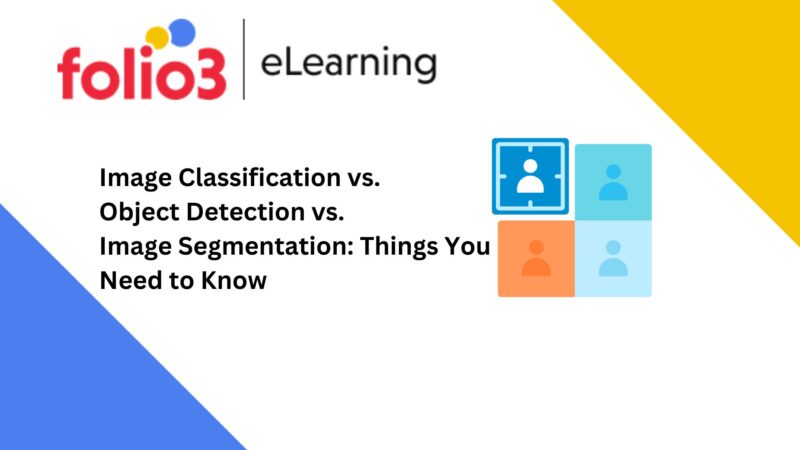Executive Summary of Image Classification vs. Object Detection vs. Image Segmentation
Just like human vision enables us to understand the visual world, computer vision trains machines to see the world. Machines rely on techniques that help them draw meaning from visual data to understand what they see.
The core techniques of image analysis in computer vision are accomplished through image classification, object detection, and image segmentation. These approaches share the common goal of deciphering visual content, But their unique methods and strengths are used for distinct tasks.
Classification vs. detection vs. segmentation are common yet highly applicable and effective underlying techniques for computer vision tasks. They help computer vision applications extract actionable information from images and use that data for automated tasks in image processing and AI object detection solutions.
In this blog, you will learn about these techniques and understand their uses.

What Is Image Classification, Object Detection, or Image Segmentation, and When to Use Each?
Images have served as critical sources of information and suggest extensive data for computational analysis. But often, it becomes difficult to extract and interpret this data. Therefore, three fundamental techniques are required for this process: image classification, object detection, and image segmentation.
These methods are integral to understanding images because each employs a distinct approach and demonstrates unique strengths.
Image Classification:
Image classification is the process of assigning a label or category to an image based on its content. It involves training a model to recognize pre-defined classes and categorize images into those classes. This technique works best when there is a clear distinction between different categories, such as recognizing animals in wildlife photography.
There are two common types of classification:
- Single-label classification
- Multi-label classification
1. Single-label Classification:
Single-label classification categorizes data into a single-class label. It is appropriate when you want to classify a single class or when labels are mutually exclusive. For example, fruit images, where you categorize them as apples or oranges. It cannot identify both fruits in a single image.
2. Multi-label Classification:
Multiple-label classification categorizes data into two or more class labels. If you are trying to recognize multiple features or attributes within an image, you can assign multiple labels. For example, an image of a kitchen can be classified with labels such as refrigerator, stove, and sink.
Popular Uses of Image Classification
- Image Organization and Search: Automating photo tagging for easier retrieval and organization.
- Content Moderation: Identifying inappropriate content on social media or websites.
- Self-driving Cars: Understanding traffic signs and road scenes for safe navigation.
- Product Recommendation: Suggesting products based on images customers interact with.
- Medical Imaging: Initial analysis of X-rays and MRIs for potential abnormalities.
- Fraud Detection: Identifying fraudulent activities based on images or videos.
Object Detection
It is an advanced computer vision technology that recognizes certain items in an image or video and pinpoints their exact locations. This approach extends beyond the scope of image classification, which generally categorizes the entire image and instead focuses on identifying and highlighting individual objects. It is typically done using bounding boxes, which visually mark the objects in the frame.
Key Elements
- Object Localization: Determines where each object is situated within the spatial context of the image.
- Object Classification: Assigns a label to each detected object, indicating its class (e.g., person, car, traffic sign).
- Confidence Scores: Indicates the degree of certainty in the model’s predictions, allowing for filtering or prioritization of results
Popular Uses of Object Detection
- Self-driving Cars: Detecting pedestrians, vehicles, traffic signs, and other road elements for safe navigation.
- Security and Surveillance: Identifying suspicious activities, tracking individuals, and detecting objects of interest in video footage.
- Medical Imaging: Locating tumors, lesions, or other abnormalities in medical scans for diagnosis and treatment.
- Face Detection: Recognizing and locating faces in images and videos for authentication, personalization, and social media applications.
Image Segmentation
Image segmentation is an advanced computer vision technique that goes beyond the other two techniques. It entails evaluating an image down to the pixel level and classifying each one into certain groupings.
Essentially, it’s like carefully dividing an image into its constituent parts, where every single pixel is assigned to a specific object or background area. This method offers a detailed and precise breakdown of the visual elements within an image.
Types of Image Segmentation
- Semantic Segmentation: Assign each pixel to a semantic category (e.g., road, car, sky).
- Instance Segmentation: Distinguishes individual instances of the same object (e.g., multiple people in a crowd).
- Panoptic Segmentation: Combines semantic and instance segmentation, also accounting for “stuff” regions (e.g., grass).
Popular Uses of Image Segmentation
- Medical Imaging: Analyzing scans for precise tumor and organ segmentation.
- Self-driving Cars: Precisely segmenting lanes, road markings, and objects.
- Autonomous Robots: Segmenting objects for interaction and navigation.
- Satellite Imagery Analysis: Extracting features like roads and vegetation.
- Object Counting and Tracking: Accurately counting and tracking individual objects.
- Content Creation: Enabling techniques like green screen and chroma keying.
- Augmented Reality: Creating realistic AR experiences with accurate object segmentation.
Image Classification vs. Object Detection vs. Image Segmentation
1. Image Classification Vs. Object Detection
- Classification Type
Image classification identifies the overall content of the image, but object detection localizes multiple objects and identifies them within an image.
- Class Label
Image classification assigns a single class label to an image, while object detection provides class labels and bounding boxes around each object.
2. Object Detection Vs. Image Segmentation
- Image Position
Object detection is less granular and focuses on object existence and position, whereas image segmentation is high granularity and easily captures detailed object shapes and individual pixels.
- Shape and Pixel Analysis
Object detection is computationally efficient, but image segmentation masks the image pixel-wise, outlining its shape.
3. Image Classification Vs. Image Segmentation
- Single Class Labels
Image classification assigns a single class label to the entire image (e.g., cat, car, landscape). Image segmentation divides images into regions, assigning each pixel to a specific object class.
- Pixel-by-Pixel Object Analysis
Image classification single labels the image, whereas image segmentation works by pixel analysis in an image.
4. Image Classification vs. Object Detection vs. Image Segmentation
| Features | Image Classification | Object Detection | Image Segmentation | |
|---|---|---|---|---|
| Task | Classify entire image | Identify & locate objects | Identify & locate objects | |
| Output | Category label (e.g., cat) | Bounding boxes with labels | Pixel-wise object/background masks | |
| Level of detail | Least detailed | Moderately detailed | Most Detailed | |
| Strengths | Efficient, versatile | Spatial information, further analysis | Fine-grained understanding, precise boundaries | |
| Limitations | No object location, limited granularity | Bounding boxes only, complex scenes | Computationally expensive, intricate objects |
Conclusion
Image classification vs. detection vs. segmentation are often confused but have distinct applications and techniques. Understanding these differences is crucial for selecting the appropriate method for your computer vision tasks.
Knowing the difference between these three techniques is crucial for the future because they play an important role in various applications. Eventually, these techniques will continue to evolve and become even more accurate. So, let’s embrace these powerful techniques and see where they take us in the future!


Dawood is a digital marketing pro and AI/ML enthusiast. His blogs on Folio3 AI are a blend of marketing and tech brilliance. Dawood’s knack for making AI engaging for users sets his content apart, offering a unique and insightful take on the dynamic intersection of marketing and cutting-edge technology.









